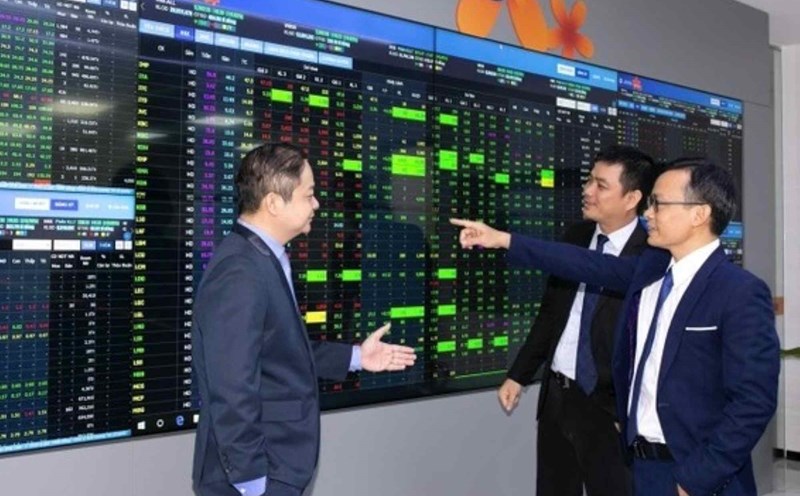The heat from the banking group not only attracted liquidity to exceed the VND50,000 billion mark but also pushed the VN-Index to unexpectedly increase the gap right at the beginning of the session and maintain a positive green color, thereby reaching a new historical peak.
At the end of the session on August 14, the VN-Index increased by 29.09 points to 1,640.69 points. The value of matched orders on HoSE reached VND 50,600 billion.
While the general market is improving, foreign transactions have become a minus point when continuing the sudden net selling momentum of VND 2,409 billion. On HoSE, foreign investors net sold more than VND2,366 billion
After buying, VJC shares were net bought the most by foreign investors in the whole market with a value of VND224 billion.
In contrast, HPG shares were the code that foreign investors suddenly net sold for VND424 billion; FPT was also strongly "disbursed" VND375 billion. Next, the codes that were sold strongly on HOSE included SSI, CTG and MSN with values of VND293 billion, VND227 billion and VND208 billion, respectively.
Thus, the market has had 9 consecutive sessions of increase with abundant liquidity. Experts assess that the upward trend can still last until 2026 thanks to supporting factors such as economic growth, improved business profits, and favorable macro policies. If the market adjusts techniques from now until the end of August, this will be an opportunity for investors to participate instead of rushing to buy at high prices.
After a period of heating up thanks to business results in the second quarter, banking, securities, and real estate groups still maintained positive price, technical and liquidity signals, however, cash flow began to spread to the infrastructure, oil and gas, chemical, retail and seafood export industries.
Dr. Nguyen Duy Phuong, Strategic Investment Director of DGCapital, said that the market is in a cash flow rotation phase. Key stocks are still attracting capital, but there are signs of taking profits and allocating them to groups that have not increased much. This shift helps many classes of stocks have the opportunity to increase prices, creating conditions for investors to correct their mistakes even when buying at high prices. However, it is necessary to closely monitor the general signal of the market to avoid the risk of deep adjustment like two weeks ago.
With most of the positive information reflected in prices, careful stock selection and improved risk management should be a top priority. In particular, new investors entering the market often have no experience, constantly chasing the wave, trading enthusiastically but ignoring warning signals. This group can compete to buy at very high prices, until the market suddenly corrects and has to sell disciplined, right when the stock is at its bottom.











